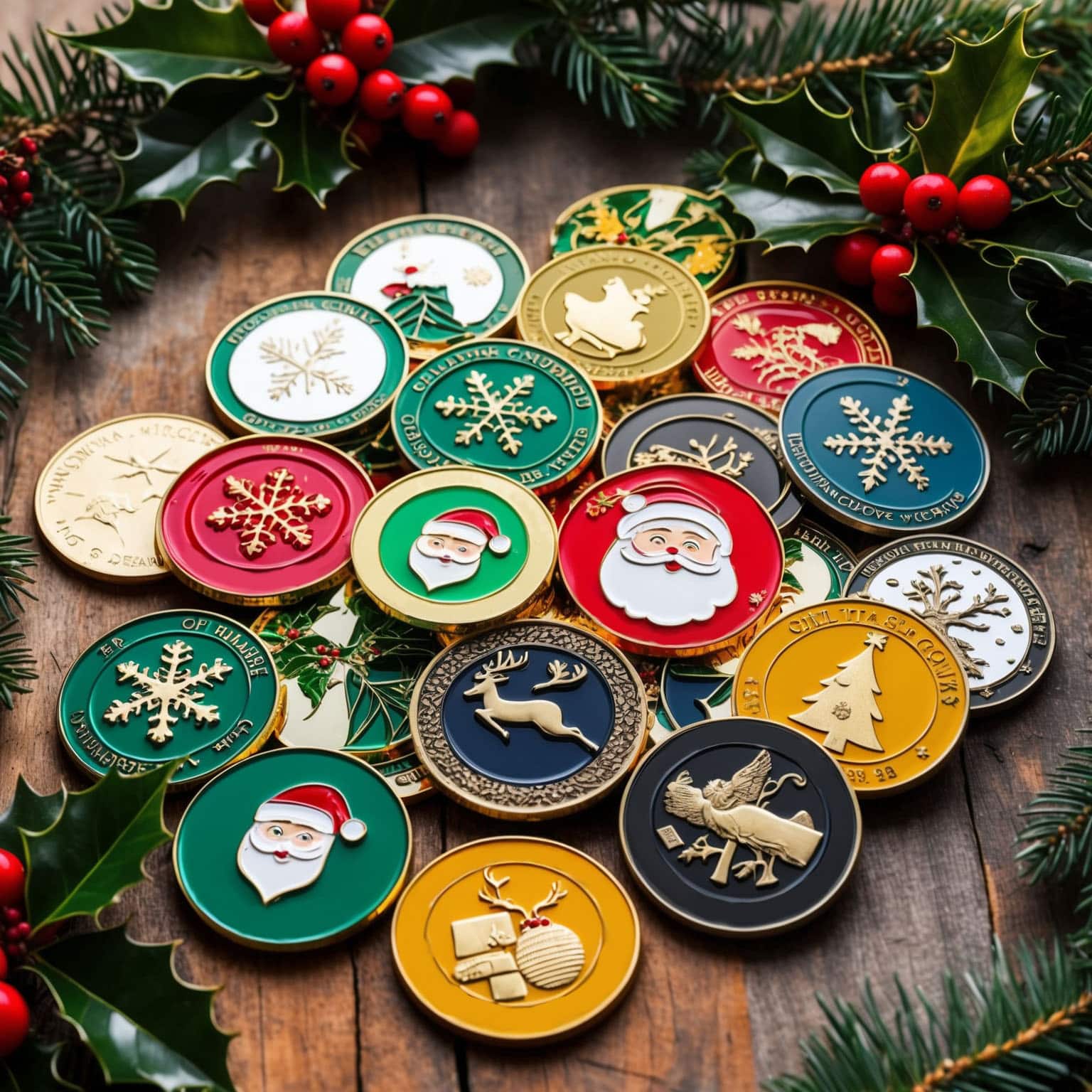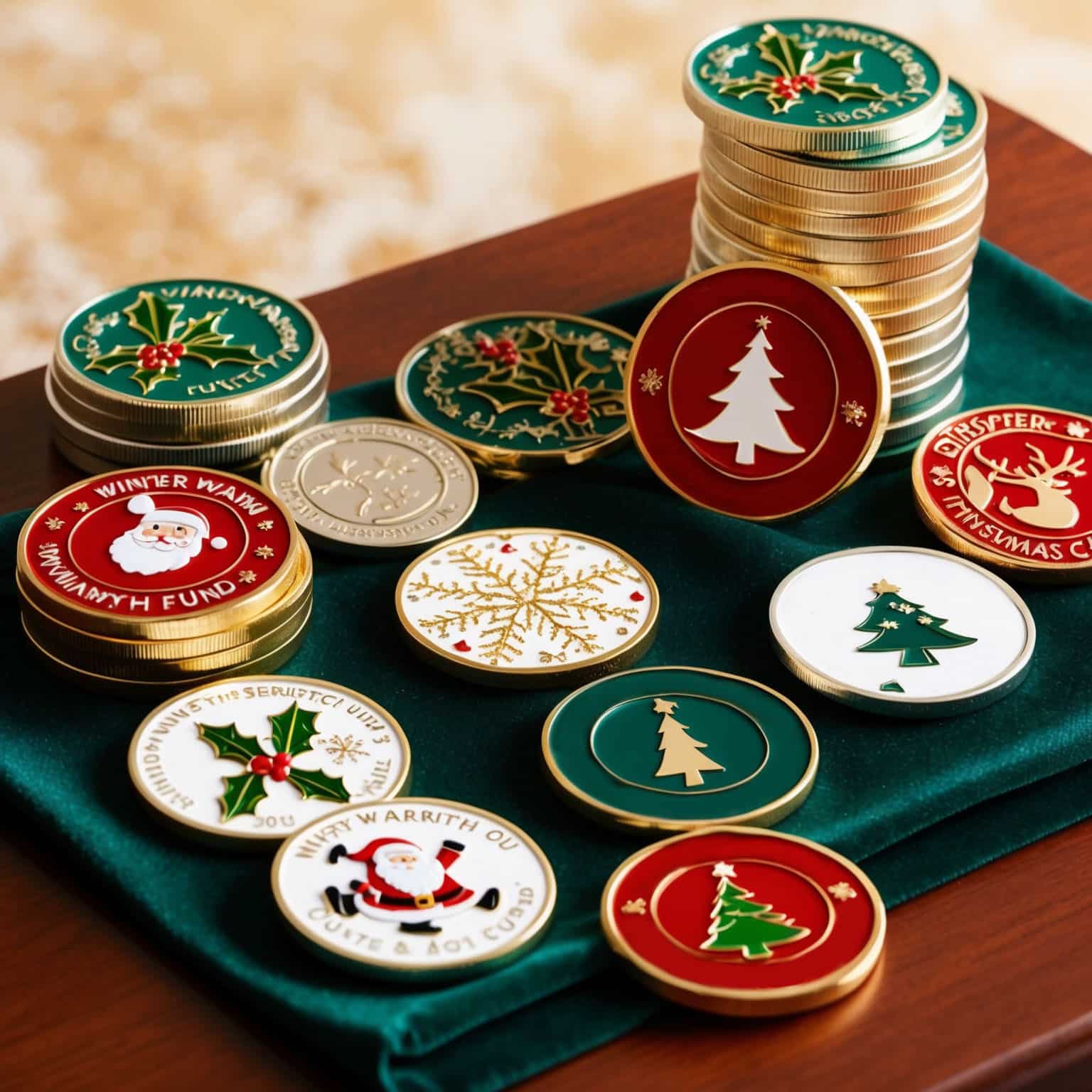The Importance of Coins Care
Collecting coins is a captivating hobby that connects enthusiasts with history, culture, and artistry. Whether you are a novice collector or an experienced numismatist, maintaining the condition of your coins is crucial to preserving their value and beauty. Proper care and maintenance can prevent damage and deterioration, ensuring that your treasured coins remain in pristine condition for years to come.
In this article, we will explore nine essential tips for maintaining and caring for your coin collection. These tips cover handling, storage, cleaning, and environmental control, providing a comprehensive guide to preserving your valuable coin.
1. Handle Coins Properly
Why Proper Handling Matters
The way you handle your coin can significantly impact their condition. Oils, dirt, and contaminants from your skin can cause discoloration and corrosion over time. Proper handling techniques are crucial to prevent unnecessary damage.
Tips:
- Wear Gloves: Use clean, lint-free cotton or nitrile gloves when handling a coin to avoid transferring oils and dirt from your hands.
- Hold by the Edges: Always hold coins by their edges, never the faces, to minimize contact with the coin’s surface.
- Avoid Dropping: Handle coins over a soft, clean surface to prevent damage in case you accidentally drop them.
Example: An experienced coin collector always wears cotton gloves and handles coins by their edges, ensuring that the coin surfaces remain untouched and free from fingerprints.
2. Store Coins Safely
Choosing the Right Storage Solutions
Proper storage is essential to protect coins from environmental damage, such as humidity, temperature fluctuations, and pollutants. Selecting the right storage solutions can preserve the condition and value of your collection.
Tips:
- Coin Holders: Use acid-free coin holders, such as flips, capsules, or cardboard holders, to protect individual coins.
- Albums and Binders: Store coins in albums or binders with acid-free pages and pockets to organize and protect your collection.
- Coin Boxes: For larger collections, consider using coin storage boxes with compartments to keep coins separated and secure.
Example: A coin collector organizes their collection in a high-quality album with acid-free pages, ensuring each coin is protected from environmental factors and easy to view.
Controlling the Environment
Environmental factors like humidity, temperature, and air quality can affect the condition of your coins. Maintaining a stable and controlled environment is crucial for long-term preservation.
Tips:
- Humidity Control: Keep the humidity level in your storage area between 30% and 50% to prevent corrosion and tarnish. Use silica gel packs or a dehumidifier if necessary.
- Temperature Stability: Store coins in a cool, stable environment away from direct sunlight, which can cause temperature fluctuations and UV damage.
- Air Quality: Ensure good air quality in the storage area by avoiding exposure to pollutants, dust, and chemicals.
Example: A collector stores their coins in a climate-controlled room with a dehumidifier and silica gel packs to maintain optimal humidity levels and protect their collection from environmental damage.
3. Clean Coins Correctly
When to Clean Coins
Cleaning coins can be risky and is generally discouraged unless absolutely necessary. Improper cleaning can reduce a coin’s value and cause irreversible damage. Only clean coins if they are heavily soiled and you are confident in your ability to do so safely.
Tips:
- Assess Necessity: Determine if cleaning is essential. Light tarnish or natural patina should be left intact, as it can add character and value.
- Professional Cleaning: For valuable or rare coins, consider seeking professional cleaning services from a numismatist or coin conservation expert.
Example: A collector discovers an old coin with significant dirt buildup. Instead of attempting to clean it themselves, they consult a professional numismatist for advice and potential conservation services.
Safe Cleaning Methods
If you decide to clean a coin, use the safest methods possible to avoid damaging the surface.
Tips:
- Distilled Water: Rinse the coin gently in distilled water to remove surface dirt. Avoid tap water, which can contain chlorine and other chemicals.
- Soft Cloth: Pat the coin dry with a soft, lint-free cloth. Do not rub the coin, as this can cause scratches.
- Avoid Abrasives: Never use abrasive materials, chemicals, or polishing agents on coins, as they can damage the surface and reduce value.
Example: A collector uses distilled water and a soft cloth to gently rinse and dry a coin, ensuring no abrasive materials or chemicals come into contact with the coin’s surface.
4. Prevent Physical Damage
Protecting Coins from Physical Damage
Physical damage, such as scratches, dents, and wear, can significantly reduce a coin’s value. Taking precautions to prevent physical damage is essential for maintaining your collection.
Tips:
- Soft Surfaces: Handle coins over soft surfaces like a clean cloth or foam pad to cushion any accidental drops.
- Separate Storage: Store coins individually in holders or compartments to prevent contact and friction between coins.
- Avoid Carrying Loose Coins: Never carry loose coins in your pocket or bag, as they can rub against each other and cause damage.
Example: A coin collector always places a soft cloth on their work surface before handling coins, ensuring that any accidental drops do not result in physical damage.
Using Protective Measures
Using coin holders and capsules provides an extra layer of protection against environmental factors and handling damage. These protective measures are especially important for valuable and rare coins.
Tips:
- Acid-Free Materials: Choose coin holders and capsules made from acid-free materials to prevent chemical reactions with the coin’s surface.
- Secure Fit: Ensure that holders and capsules fit the coins snugly to prevent movement and friction.
- Labeling: Label holders and capsules with relevant information, such as the coin’s date, mint, and grade, for easy identification and organization.
Example: A collector uses high-quality, acid-free coin capsules for their most valuable coins, ensuring they are protected from environmental factors and handling damage.
5. Understand Coin Grading
The Importance of Grading
Coin grading is the process of evaluating a coin’s condition and assigning it a grade based on a standardized scale. Understanding coin grading is essential for assessing value and ensuring proper care.
Tips:
- Learn Grading Standards: Familiarize yourself with the major coin grading standards, such as those from the Professional Coin Grading Service (PCGS) and the Numismatic Guaranty Corporation (NGC).
- Use Grading Tools: Invest in basic grading tools, such as a magnifying glass or loupe, to examine coins closely.
- Professional Grading: Consider having valuable or rare coins professionally graded and encapsulated by a reputable grading service.
Example: A collector uses a magnifying glass to closely examine coins and assess their condition based on standardized grading criteria, ensuring accurate evaluation and proper care.
Grading Systems and Scales
Understanding the various grading systems and scales used in numismatics helps collectors accurately assess and compare the condition of their coins.
Tips:
- Sheldon Scale: Learn the Sheldon Scale, which ranges from 1 (Poor) to 70 (Mint State) and is widely used for grading U.S. coins.
- Descriptive Grades: Familiarize yourself with descriptive grades, such as Good (G), Very Fine (VF), and Extremely Fine (XF), which provide a general assessment of a coin’s condition.
- Regular Practice: Practice grading coins regularly to improve your skills and accuracy in assessing coin condition.
Example: A collector uses the Sheldon Scale to grade their coins, noting the condition and assigning appropriate grades for each coin in their collection.
6. Maintain Accurate Documentation
Keeping Detailed Records
Maintaining accurate documentation is crucial for managing your coin collection, especially if you plan to sell, trade, or insure your coins. Detailed records help you track the value, condition, and provenance of each coin.
Tips:
- Inventory List: Create a comprehensive inventory list that includes descriptions, grades, purchase prices, and dates of acquisition.
- Photographic Records: Take high-quality photographs of each coin, capturing both the obverse and reverse sides, as well as any unique features or marks.
- Update Regularly: Keep your records up to date by adding new acquisitions, noting changes in condition, and recording any sales or trades.
Example: A collector maintains a digital inventory with detailed descriptions and high-resolution images of each coin, ensuring that their collection is well-documented and easy to manage.
7. Insure Your Collection
Protecting Your Investment
Insuring your coin collection provides financial protection against loss, theft, and damage. Proper insurance coverage ensures that you can recover the value of your coins in case of unforeseen events.
Tips:
- Specialized Insurance: Obtain insurance coverage specifically for your coin collection, either through a specialized insurer or as an addition to your homeowner’s policy.
- Accurate Valuation: Ensure that your collection is accurately valued, using professional appraisals and market research.
- Document Claims Process: Familiarize yourself with the claims process and keep all necessary documentation, such as receipts, appraisals, and photographs, readily accessible.
Example: A collector insures their valuable coin collection with a specialized insurer, providing peace of mind and financial protection in case of loss or damage.
8. Engage with the Numismatic Community
Continuing Education
Engaging with the numismatic community helps collectors stay informed about best practices, market trends, and new developments in coin care. Continuing education and networking with other collectors can enhance your collecting experience.
Tips:
- Join Numismatic Societies: Become a member of numismatic societies, such as the American Numismatic Association (ANA), to access educational resources and connect with other collectors.
- Attend Coin Shows: Participate in coin shows and conventions to learn from experts, buy and sell coins, and expand your knowledge.
- Online Forums and Groups: Join online forums and social media groups dedicated to coin collecting to share experiences, ask questions, and stay updated on the latest trends and discoveries.
Example: A coin collector joins the American Numismatic Association and participates in online forums, gaining access to a wealth of information and connecting with a supportive community of fellow enthusiasts.
Learning from Experts
Engaging with experts in the field can provide invaluable insights into coin care, grading, and market trends. Experts can offer guidance on best practices and help you avoid common pitfalls.
Tips:
- Attend Workshops and Seminars: Look for workshops, seminars, and webinars conducted by numismatic experts to deepen your knowledge and skills.
- Read Books and Publications: Invest in books and subscribe to numismatic magazines and journals to stay informed about historical context, grading standards, and care techniques.
- Consult Professionals: Seek advice from professional numismatists and appraisers for expert opinions on the value, care, and authenticity of your coins.
Example: A collector attends a seminar on coin grading techniques led by a renowned numismatist, gaining a deeper understanding of how to accurately assess the condition and value of coins.
9. Regular Maintenance and Inspections
Establishing a Routine
Regular maintenance and inspections are essential for preserving the condition and value of your coin collection. Establishing a routine helps prevent damage and ensures that your coins remain in top condition.
Tips:
- Scheduled Inspections: Set a regular schedule to inspect your coins for signs of damage, discoloration, or corrosion.
- Clean Environment: Ensure that your storage environment remains clean, dust-free, and within optimal humidity and temperature ranges.
- Update Records: Keep your inventory and records up to date, including any changes in condition, acquisitions, or sales.
Example: A collector inspects their coins quarterly, checking for any signs of wear or environmental damage and updating their inventory records accordingly.
Preventive Measures
Taking preventive measures can protect your coins from potential damage and ensure their longevity.
Tips:
- Pest Control: Keep your storage area free of pests that could damage your collection.
- Emergency Plan: Have an emergency plan in place for natural disasters or other unforeseen events, including secure storage and insurance documentation.
- Monitor Conditions: Use humidity and temperature monitors to track the environment of your storage area and make adjustments as needed.
Example: A collector uses a humidity monitor in their storage room to ensure that humidity levels remain stable, preventing corrosion and tarnish on their coins.
The Art of Coin Preservation
Proper coin preservation is essential for maintaining the beauty, condition, and value of your collection. By following best practices for handling, storing, cleaning, and displaying your coins, you can ensure they remain in perfect condition for years to come. Engaging with the numismatic community, continuing your education, and embracing new technologies further enhance your collecting experience.
Whether you are just starting your coin collection or have been collecting for years, these tips and strategies will help you protect and preserve your coins. Embrace the art of coin preservation, and enjoy the rewarding journey of safeguarding these valuable pieces of history.
If you are interested in a unique challenge coin, you can call us at 800-371-6256 or fill out a FREE quote form.








